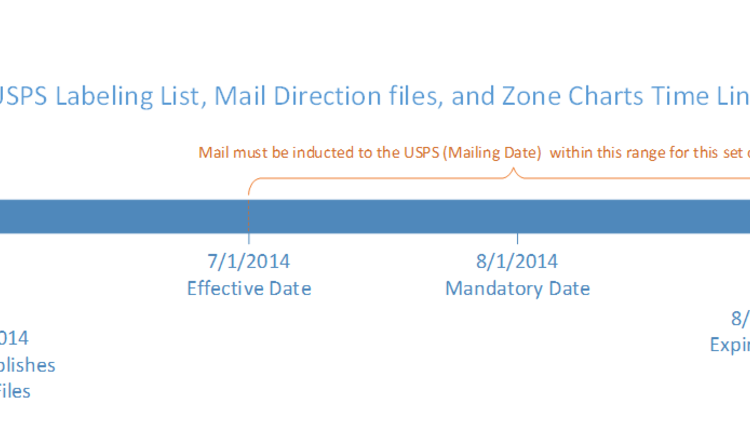Commingling mail pieces is one of the most effective ways to optimize your postage investment. Postage continues to be the largest attributable cost per mailpiece, and judging by the current dire financial situation of the United States Postal Service, it doesn't look like that situation is going to change anytime soon. Thus, many mailers are still turning to various commingling methods to reduce their overall postage, optimize their mail production, and move closer to the last mile.
Comingling is not a new concept. Periodical mailers have been combining publications for decades in order to achieve higher carrier route discounts. Different publications grouped into the same bundle in order to achieve six pieces to a route could yield substantial discounts to the mailer. In fact, one form of commingling for periodicals that is still very popular today is commingling at the address level in the form of firm bundles. A firm bundle is when two or more pieces of the same periodical is commingled together to form a single addressed piece. This is very common for a dentist office or, in my case, Boys' Life Magazine, since my three sons and I are very involved in the Boy Scouts of America. Periodical piece postage is paid for just the one addressed piece instead of each physical copy mailed to that address.
Standard mailers have also been commingling, though they typically do so at a container level. Grouping together bundles or pieces into a single tray, sack, or pallet yields postage discounts as well as destination entry opportunities. In the mid-1990s, many catalog mailers were palletizing sacks of mail in order to form courtesy pallets for destination entry discounts. Since then, software and hardware technology has advanced considerably and now sacked mailings have been significantly reduced allowing more mail to be directly inducted into strategic entry points.
Mailers have also been commingling across classes. Around 2006, software started to emerge that would combine Standard Mail catalogs and Periodical magazines into a single commingled stream. This mixed-class commingling solution opened doors for transportation companies to leverage co-mail machines as a way to intermingle dissimilar mailings into a large "pool" of combined mail pieces, yielding great carrier route discounts and further induction into the USPS processing network.
Despite whether mailings are commingled at the address, the bundle, the container, or the truck level, software is still very much at the heart of the decision process. Determining the optimal commingling pool is essential for any comingling process and significant advancements have been made recently in postage optimization. By analyzing piece and job attributes such as trim size, piece weight, mail class, and in-home dates software can begin to assist mailers in determine candidate jobs for their commingling pool. Grouping together common ZIP-Code ranges and sortation schemes can also help determine what should be sorted in data (traditional PAVE-certified presorting software) and what should be sorted physically (using MLOCR devices). Thus, what is beginning to emerge is a commingling strategy that begins to tie data and physical sortation into a single cohesive sortation scheme.
Accurate reporting and payment of course are essential as well. Fortunately, Mail.dat and PostalOne are now converging toward an approach whereby complex commingled mailings can be accurately represented in data for prompt and accurate payment.
As the USPS continues to optimize its delivery network, significantly changing labeling lists and sortation schemes, mailers need to also consider optimization of their postage process. Commingled mailings, whether done digitally, physically, or both, is still an effective way to reduce overall postage and mail preparation costs.
Chris Lien is Vice President, Software Marketing, Bell and Howell.
Comingling is not a new concept. Periodical mailers have been combining publications for decades in order to achieve higher carrier route discounts. Different publications grouped into the same bundle in order to achieve six pieces to a route could yield substantial discounts to the mailer. In fact, one form of commingling for periodicals that is still very popular today is commingling at the address level in the form of firm bundles. A firm bundle is when two or more pieces of the same periodical is commingled together to form a single addressed piece. This is very common for a dentist office or, in my case, Boys' Life Magazine, since my three sons and I are very involved in the Boy Scouts of America. Periodical piece postage is paid for just the one addressed piece instead of each physical copy mailed to that address.
Standard mailers have also been commingling, though they typically do so at a container level. Grouping together bundles or pieces into a single tray, sack, or pallet yields postage discounts as well as destination entry opportunities. In the mid-1990s, many catalog mailers were palletizing sacks of mail in order to form courtesy pallets for destination entry discounts. Since then, software and hardware technology has advanced considerably and now sacked mailings have been significantly reduced allowing more mail to be directly inducted into strategic entry points.
Mailers have also been commingling across classes. Around 2006, software started to emerge that would combine Standard Mail catalogs and Periodical magazines into a single commingled stream. This mixed-class commingling solution opened doors for transportation companies to leverage co-mail machines as a way to intermingle dissimilar mailings into a large "pool" of combined mail pieces, yielding great carrier route discounts and further induction into the USPS processing network.
Despite whether mailings are commingled at the address, the bundle, the container, or the truck level, software is still very much at the heart of the decision process. Determining the optimal commingling pool is essential for any comingling process and significant advancements have been made recently in postage optimization. By analyzing piece and job attributes such as trim size, piece weight, mail class, and in-home dates software can begin to assist mailers in determine candidate jobs for their commingling pool. Grouping together common ZIP-Code ranges and sortation schemes can also help determine what should be sorted in data (traditional PAVE-certified presorting software) and what should be sorted physically (using MLOCR devices). Thus, what is beginning to emerge is a commingling strategy that begins to tie data and physical sortation into a single cohesive sortation scheme.
Accurate reporting and payment of course are essential as well. Fortunately, Mail.dat and PostalOne are now converging toward an approach whereby complex commingled mailings can be accurately represented in data for prompt and accurate payment.
As the USPS continues to optimize its delivery network, significantly changing labeling lists and sortation schemes, mailers need to also consider optimization of their postage process. Commingled mailings, whether done digitally, physically, or both, is still an effective way to reduce overall postage and mail preparation costs.
Chris Lien is Vice President, Software Marketing, Bell and Howell.





